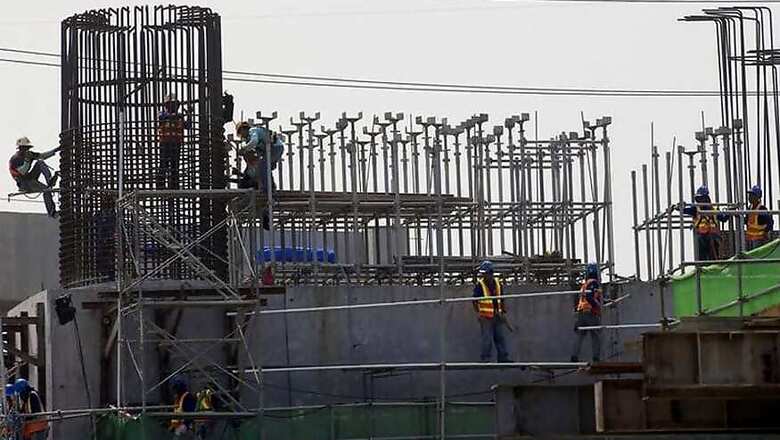
views
New Delhi: Calling economic growth during the UPA regime as "pretty decent", the government's principal economic adviser Thursday said the real problem in the Congress-led rule was macro instability caused by spiralling inflation, high fiscal deficit, widening CAD and issues with lending.
Defending the revision in GDP growth rates for most of the 10-year UPA rule, Sanjeev Sanyal, Principal Economic Adviser in the Ministry of Finance, said the basis for the revision was use of internationally accepted standards.
"From time to time GDP series is revised. You take a base year and then calculate it. This reflects that the structure of the economy changes from time to time. We have taken 2011-12 as base year and we have calculated and now we have created a back series as well.
"The further you go away from the base period, you can go back to 1950 also, it will give worse reflection of time that is why it was decided, for whatever reason you can ask the CSO, that 2004-05 was a good period from where you can create a back series," he said.
The revised numbers show India's economic growth rate averaged 6.7 per cent during the Congress-led UPA regime as compared to 7.3 per cent under the present government. Previous numbers had put the average growth rate during the 10-year UPA rule at 7.75 per cent.
"One important thing, there is no need to get politically hot headed about the matter for a very simple reason that this is a technical issue using internationally accepted standards," he said.
Replying to criticism heaped by opposition Congress to the move, he said growth rate was not the real problem in the UPA era.
"Even in the new series although the GDP rate is lower than the old series but they are still pretty decent. The real issue for that period was not the growth rate. The real problem was that it was based on macro instability. You had spiralling inflation, you had high fiscal deficits of 5-6 per cent, widening current account deficit (CAD) and serious problems with lending," he said.
Sanyal said for 2012-13, the growth was revised from 4.7 per cent in old series to 5.1 per cent in new series and further to 5.5 per cent. In 2013-14 the growth rate was revised from 5 per cent to 6.9 per cent in new series. "But since the base had increased, it was revised to 6.4 per cent, which shows massive increase in estimations from 5 per cent.
"The largest downward revision in the numbers has been from 10.3 per cent to 8.5 per cent, which is 1.8 per cent. But, if you look at the revision up, in 2013-14 it was 1.4 per cent. It is using the same scale, it is not that only revision downward has happened, in some years it is upwards also. You cannot accept a framework when it suits you and not accept it when you apply backwards," he said.
Sanyal said the new series was accepted by the opposition as an improvement over the old series data in 2015 because the GDP numbers for 2012-13 and 2013-14 fiscal were revised upwards at that time.
Former Finance Minister P Chidambaram had on February 3, 2015 said "the new data successfully establishes the fact that UPA succeeded to revive the economy. The revised GDP data will end misconceived charges that UPA mismanaged the economy".




















Comments
0 comment